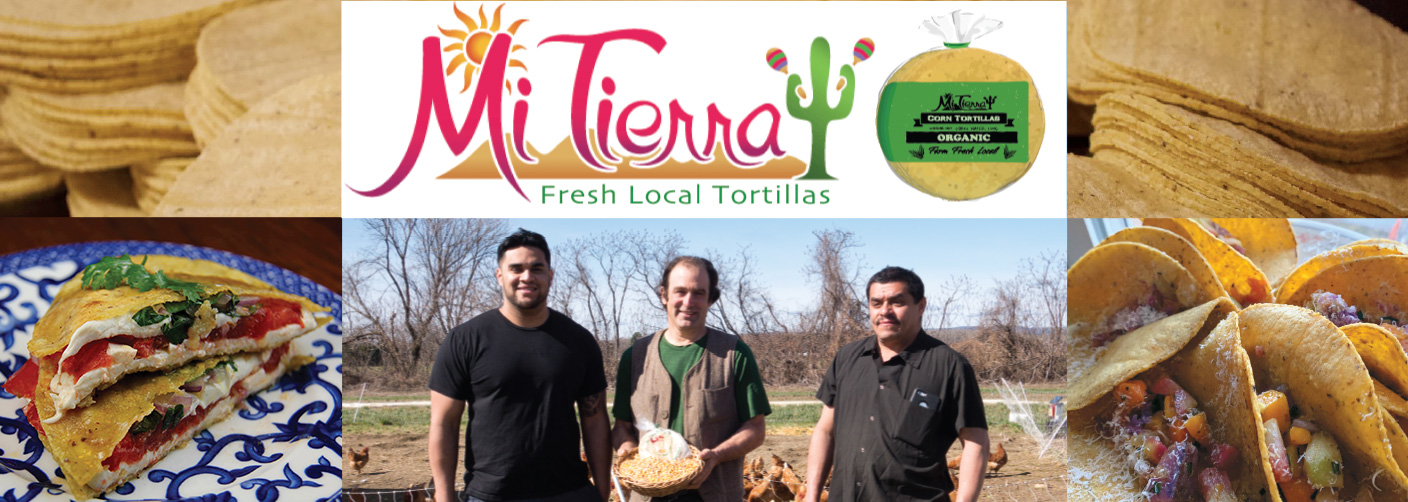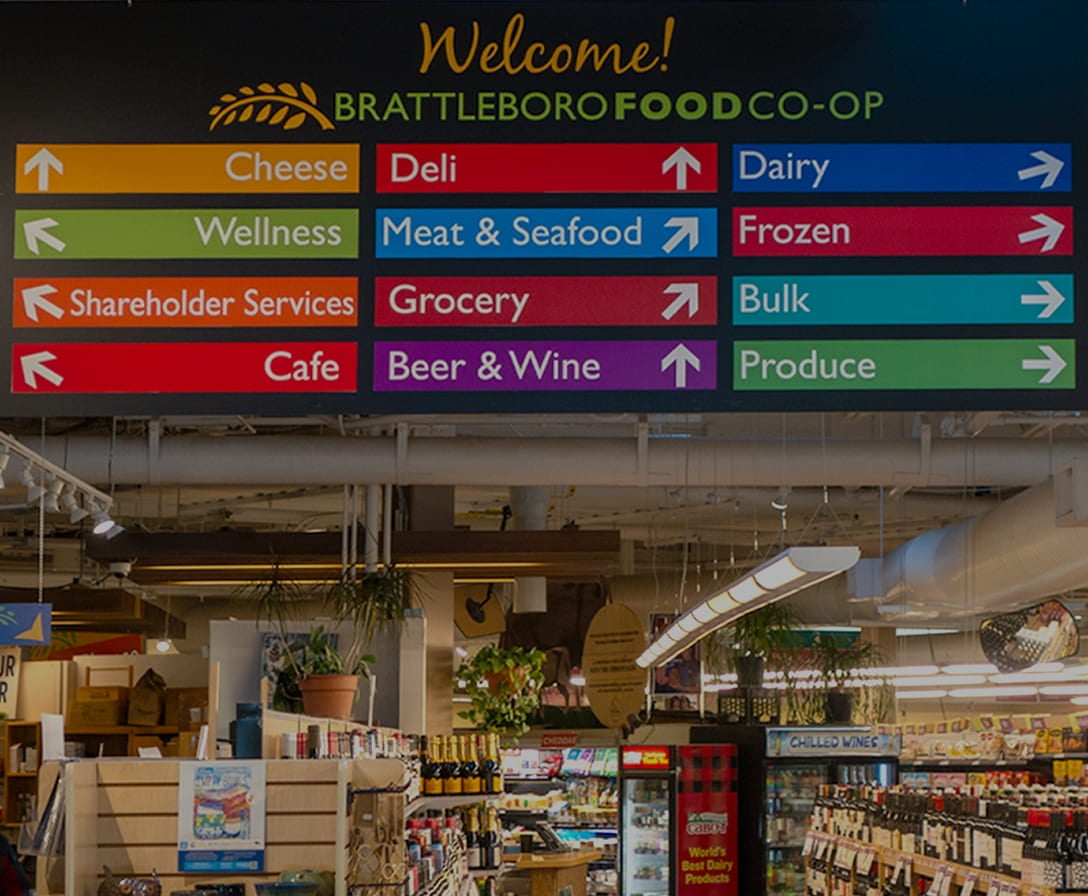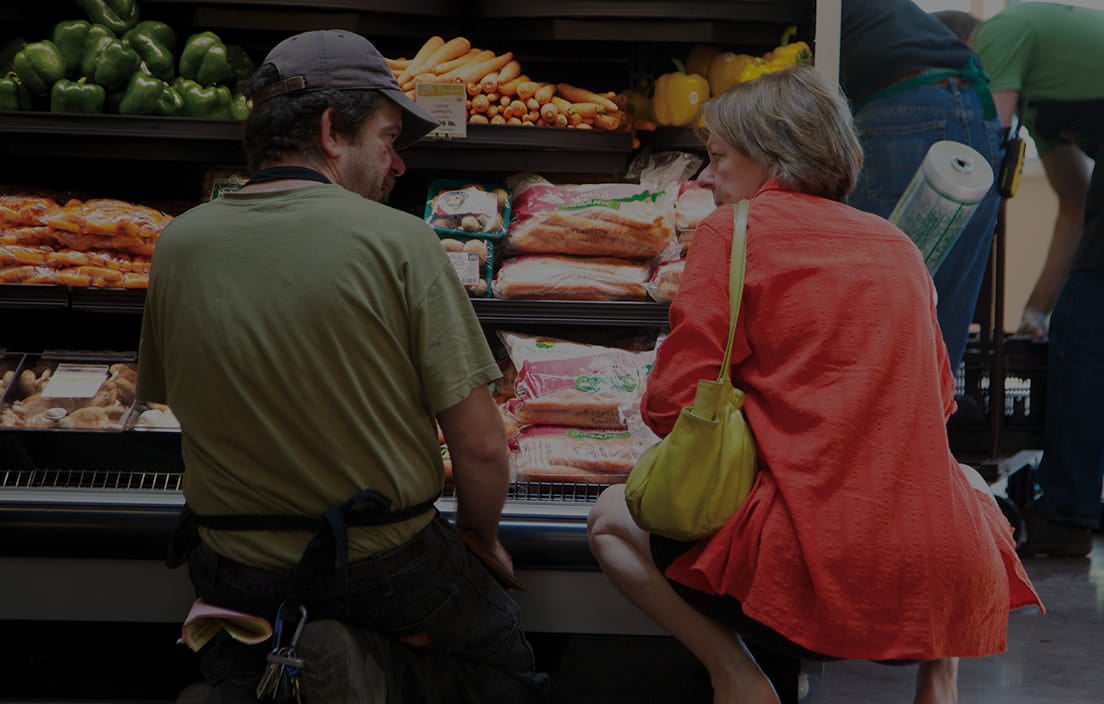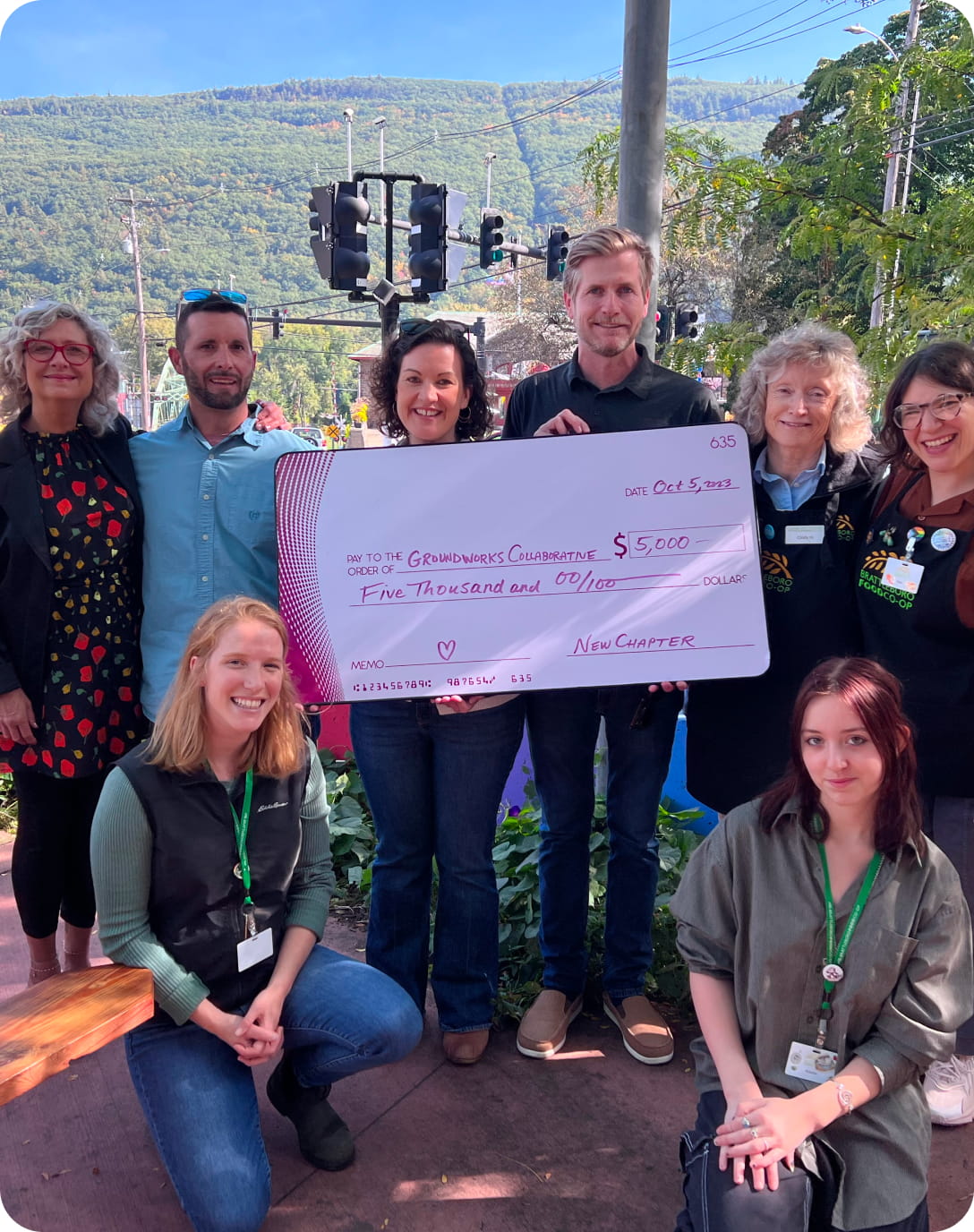Mi Tierra – Fresh Local Tortillas

When I first encountered Mi Tierra tortillas, I knew they were special. Maybe it was the fragrant perfume of fresh corn that emanated from their packages (who knew corn had a fragrant perfume?!), perhaps it was the fact that they were delivered by a wild-haired, dirt-under-the-fingernails farmer, or maybe it was the name: Mi Tierra – Spanish for “my land.” Whatever it was, I have come to understand that my enthusiasm for these little golden rounds was not unfounded. The more I’ve learned about the people and the story behind them, the more I’ve grown to love Mi Tierra Tortillas.
Jorge Sosa, Michael Docter, and so many others in the large and thriving Mi Tierra extended family have brought something truly unique and wonderful to your Co-op: real corn tortillas, made only with heirloom, non-GMO corn grown right here in the Connecticut River Valley, in the same way the native peoples of the Americas have been doing for thousands of years. Jorge Sosa immigrated to the United States from Guerrero, Mexico 25 years ago, first living in Southern California, where he met his wife, Dora, who is originally from El Salvador. They moved to Hadley, MA, about twenty years ago, and there they opened a small store on Route 9. Over time they began to serve authentic Mexican food, and eventually their business transformed into a restaurant which they called Mi Tierra.
The tortillas available in the Northeastern U.S. came as a shock to Jorge: pure white, with an acrid smell, they stay “fresh” and soft on grocery shelves for months, whereas the tortillas he was used to lasted only a short while. Where was the wonderful aroma of fresh corn, the golden color, the speckly texture? Jorge and Dora never sell products they wouldn’t eat themselves, so it was clear that if they wanted to provide corn tortillas for their customers, they would have to make them.
They first tried making their own tortillas with a mass-market masa flour. These attempts, free of preservatives and other chemicals, were closer to what they longed for, but miles away from the tortillas of Mexico. They realized they needed to make the masa, or dough, from scratch, using fresh corn, or maize. And though Mexican corn wasn’t grown here, Jorge knew they could use our native New England corn instead.
Jorge partnered up with Michael Docter, a farmer, friend, and honorary family member who at the time owned a neighboring farm called Winter Moon Roots (he handed it off to Rosendo Santizo in May of 2022). Michael assisted by connecting Jorge with local farmers who grow Non-GMO, heirloom, and organic corn, as well as by making an equity investment in the new business venture. Happily, this also granted him access to the taste testing process: it wasn’t enough just to use locally grown maize, they had to get just the right variety to get the best possible flavor. Michael remembers when Jorge called him over to the restaurant to try out four or five versions, with various meats and salsas to accompany them. When they hit on the most spectacularly fragrant, delicious, tasty tortilla, they knew that was it. They began selling them at the winter farmers market, and they were an instant hit. Demand quickly grew.
Ernesto, Jorge and Dora’s adult son, remembers his dad calling him around this time, and asking, “Wanna go to Texas?”
“I thought he was joking, that really we’d get lunch or something,” Ernesto said, “So I said ‘Yeah, sure, whatever.’” But when Jorge picked him up, Ernesto found they were on their way to Texas to buy a tortilla machine! These machines flatten the dough and cut the rounds automatically, without the need to use a hand press, and so allowed Mi Tierra to greatly increase their production.
About three months later, tragedy struck: Mi Tierra Restaurant, and many other small businesses in the same plaza, burned down, taking the brand new tortilla machine with it. Amidst the sadness, turmoil, and loss, Jorge, Dora, and her brother Gaspar, with the help of many other friends and family, began to manufacture the tortillas using just two small hand presses. They truly put their blood, sweat and tears into these tortillas: you can see in the new Mi Tierra Restaurant today one of the hand presses from that time, cracked down the middle from so much wear and tear.
Jorge eventually bought another tortilla machine, insisting they purchase one even bigger than the one lost in the fire. When the family made the trip to Southern California to pick it up, Jorge visited some tortilla factories. There he saw first-hand the buckets of dough conditioners, preservatives and bleach solutions with labels that warned “do not touch!” because of the risk of chemical burns, workers wearing masks and protective clothing to keep them safe while they worked with the harmful substances, mixers filled with yellow masa turning white in a matter of seconds after the bleach solution was added.
Mi Tierra Tortillas, because they contain none of these harmful and dangerous additives, require careful attention. Where most tortilla manufacturers use commercial masa flour and add chemicals to smooth out the dough, make it more durable, and create the easiest consistency for production, Mi Tierra relies on the skillful eyes and hands of Antonia Guzman, the production manager of the tortillaria in Springfield, and the help of three or four employees. There the tortilla machine, two large stainless-steel vats that hold about 500 pounds of corn combined, and other equipment are used to make the Mi Tierra Tortillas to the highest standard. Variations in each batch of corn from each different farm and each different harvest require that the process be carefully tended to and adjusted. (*See below to read about nixtamalization). The corn must be boiled and soaked for just the right amount of time, at just the right temperature, and the hard outside hull must be removed and yet the maize must retain enough strength and body to create a durable masa. Much attention and care goes into each and every batch of Mi Tierra Tortillas.
Freshness is guaranteed for all Mi Tierra Tortillas, but nothing goes to waste: tortillas not destined for sale are fried into tortilla chips or used to feed 400 laying hens, which live happily on the Winter Moon Roots farmland that is adjacent to the new Mi Tierra Restaurant location. Jorge and Michael tell me the tortillas last about a week in the fridge, but I’ve found them to be incredibly versatile even after they’ve lost their pliability. I often add them to scrambled eggs as they cook, with a bit of water added to make them nice and soft, almost creamy. When they’re done I add a spoonful of coconut oil, salt, and grind some black pepper on top to make an incredibly simple, but amazingly delicious breakfast. They can also be used beautifully in casseroles, soups, salads…with such high-quality ingredients, the possibilities are virtually endless. But maybe you’re more like their son Ernesto, who has no need to worry about what to do with Mi Tierra Tortillas that have been sitting around for a few days. A football player, he told me he has a “pack a day” habit. “It’s bulking season,” he told me with a smirk.
Currently Mi Tierra tortillas are sold in Vermont, Boston, Western Mass, some Connecticut food co-ops, Whole Foods, and even New York City — anywhere within one day’s delivery is an option. Michael even delivers Mi Tierra Tortillas by bicycle to locations that are near enough. And part of Mi Tierra’s mission all along has been to get good quality organic food to children in public schools. Springfield, MA now celebrates Taco Tuesday once a month with Mi Tierra Tortillas. They supply several other school systems as well. As a way to insure kids get the healthiest food they incentivize the organic – by offering schools the organic tortillas at the same price as the conventional.
After learning about the world of Mi Tierra, I have come to realize that these little tortillas are about much more than good food. They remind me that New England, though thousands of miles away from Mexico and thousands of years away from the ancient Americans of long ago, is deeply connected to that time and place. These simple corn tortillas, in how they are made, what they’re made of, and who they’re made by, are reintroducing to us New Englanders one of the staples of true North American cuisine, and thus reconnecting us to a long-lost part of our heritage. Mi Tierra Tortillas truly are of my land, and yours too!
*Nixtamalization
Before it’s made into masa, maize must first be processed the same way peoples native to The Americas have been doing for at least 3 or 4,000 years. This process is called nixtamalization, and involves cooking and soaking the maize for many hours with lime, calcium, or ash; washing it thoroughly with fresh water; and removing the tough outer hull. This process has many benefits: it increases the nutritional value by releasing vitamin B3, increasing its protein availability, dramatically reduces phytic acid and mycotoxins, and increases calcium; it brings out its beautiful flavor and aroma; and enables the maize to be used more easily for making masa by increasing its stickiness and flexibility. Lime is basically food-grade fossilized seashells.
Come try some for yourself! Thursday, Sept. 7 from 1:30-4:30 pm.
By Ruth Garbus
About Producer of The Month

Shop Online

On Sale Now!

